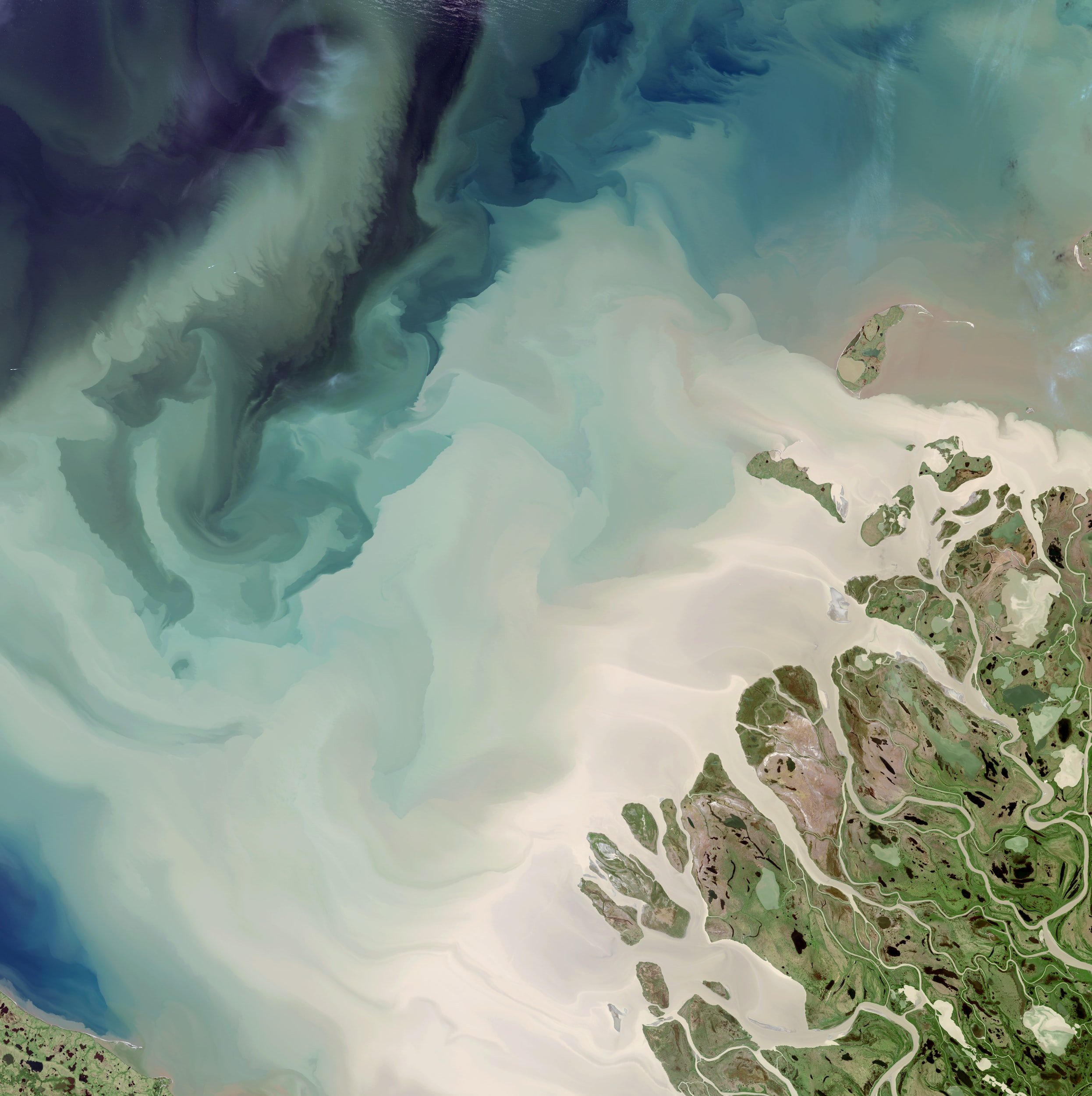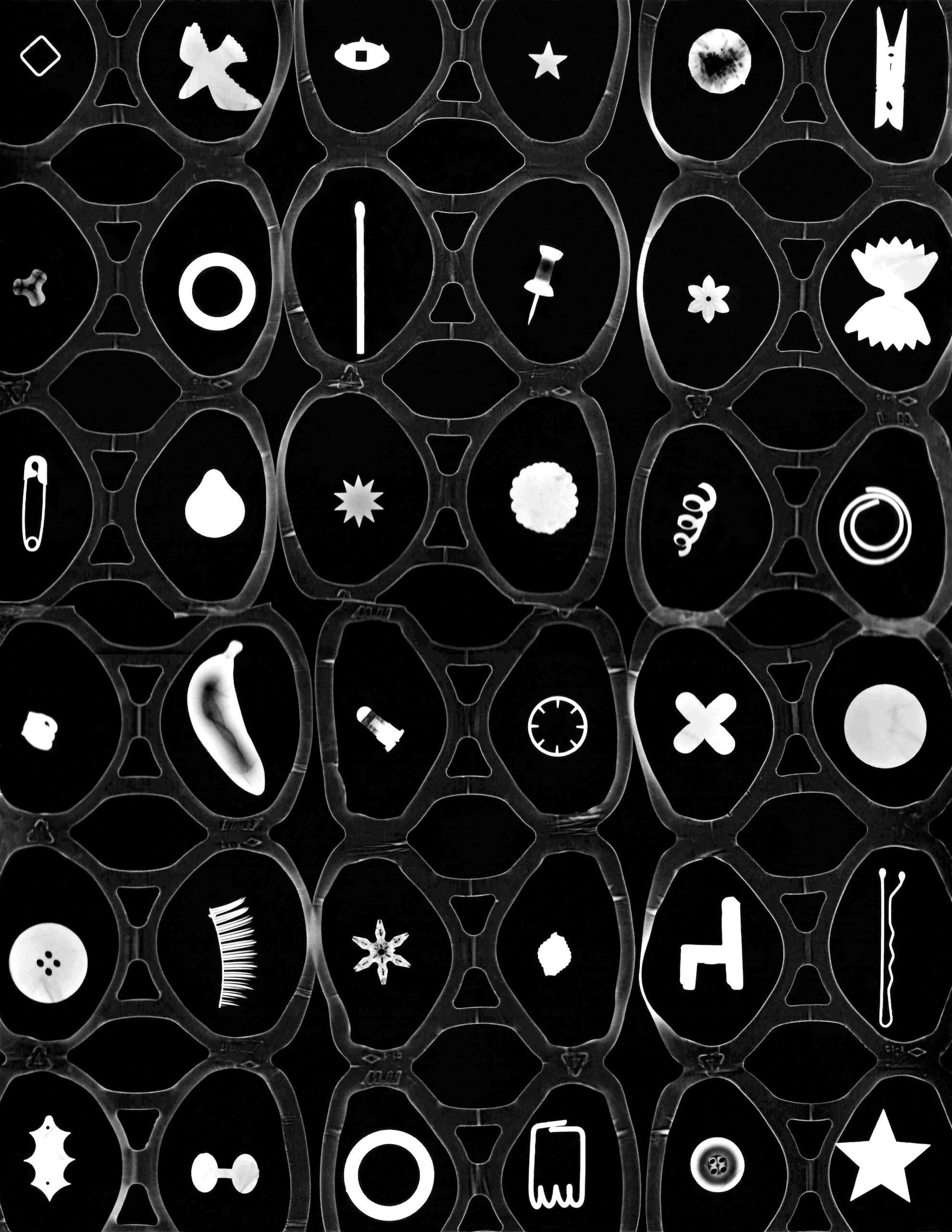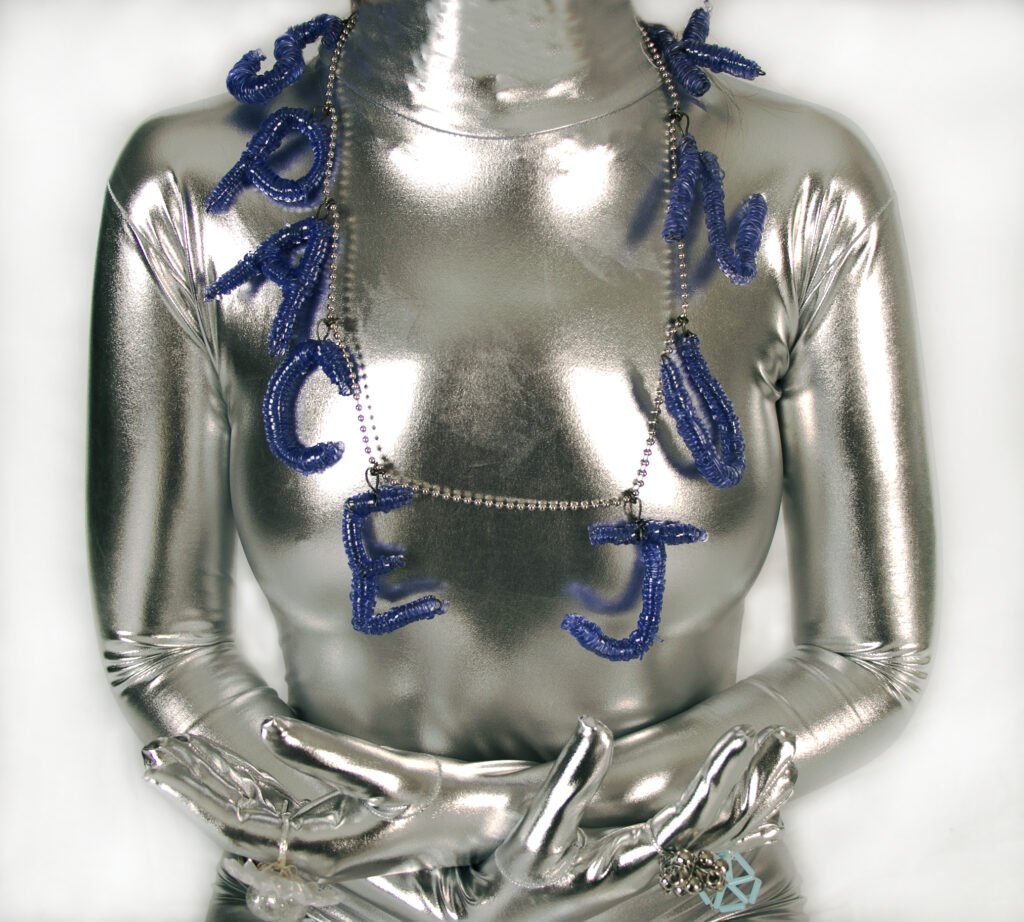
Regenerative Futures in Outer Space
This is the first online residency of its kind – the opportunity for artists and academics to collaborate on the theme of environmental justice in outer space.

Have you wondered what the environmental costs are of outer space exploration?
Did you know asteroids and planets are soon to be mined for precious metals, minerals and water, with no idea of the eco systems this may destabilise?
Are you interested to uncover more about the current distribution of power in outer space and how this impacts Earth’s future?
Land Art Collective has begun a brand new multidisciplinary residency series. The first residency explores sustainable futures in outer space. Pairing six artists with three space research academics the residency was held online over the course of three months. Through the technology space allows we built a treasured community and rhythm during the Covid-19 epidemic which accumulated in the works you can explore below.
This initiative aims to act as an accelerator to critical discussions around space exploration and to make the topic more accessible to a wide audience.
watch live event here
Discover the projects created during the residency below

Artists
Abigail Hunt / Bethany Rigby / Caitlin Berrigan / Genevieve Waller / Julie F Hill / Kieren Reed / Lucy Helton /
Researchers in Residence
Dr Julie M. Klinger / Dr Lisa Ruth Rand / Dr Valerie A. Olson
With generous contributions from:
Chris Welch, Deondre Smiles, Eleanor Armstrong, Barrie Johnson, Melanie Goodchild, Sanjeev Gupta, Lumen Studios, Sitraka Rakotoniaina, Duncan Blake, Brad Tucker, Cassandra Steer, Alice Gorman, Daniel Britt, Christopher Newman, Thomas Cheney, Dana Burton, Mariana Tres.
Midas Tongues & Microbial Mutiny
The racialized consolidation of wealth and ecocidal effects colonization has had upon planet Earth are abundantly clear. Colonization is the end of life worlds, and should not be repeated in extraterrestrial realms. We do not lack imagination to transform the compounding crises in which we find ourselves. Those in power lack the will to change. There is no shortage of possibilities, proposals, policies, and experiments for sustainable living on Earth. Those who dream are erased, meaningful policies are weakly enforced, and sustainable lifeways are violently suppressed in favor of these absurd asymmetries of power and consumption. With our attentions upon the colonial logics behind the exploration of Mars and other celestial bodies, our collaboration considers the disruptive and uncontrollable power of microbes in these future-present scenarios.
Our research and dialogue with each other speculated upon two main concepts that we are working on developing into fictional scenarios with audio/visual components: (1) Spatiality and mineral relations in Nevada as an analog between Earthly and Martian Lands; and (2) the mineral appetites of microorganisms as potential disruptors in space and mining endeavors.
1. Types of spatiality and mineral relations between Earthly and Martian Lands: We looked to Nevada as a figural site where space entrepreneurs and military industries have materialized analogs of future scenarios: wars in Iraq and Afghanistan, vast data centers, mining extractivism vs. fossil fuels, navigation on Mars, and storage of nuclear waste. Nevada contains a proliferation of mines, nuclear blast sites, Indigenous land dispossessions, gambling, unregulated real estate development, and golf courses in the deserts. Under which conditions would Mars become an analog to Nevada? In the false choice between mines, dumps, and missile ranges, we foresee golf courses emerging as the perversely most peaceful alternative; the environmental violence, chemical warfare, and social exclusion built into their construction construed as progress. We look at terraforming bent to this purpose, the immense transformation of landscapes and of living and non living matter so that a few rich men can drive tiny cars around vast artificial greens chasing after little white balls. What kinds of mineral commodity chains, extracted from heavy earth elements, would be required to fashion a golf ball to perform with only a third of Earth's gravity? What would it take to include the cost of such golf balls in launch payloads to Mars? Who would be exposed to the hazards of mining and processing, and in what ways would their labor be devalued and erased to preserve the illusion of pristine, unsullied, and uncomplicated environments contained within the green, a world within a world? 2. Foregrounding the agency of lithotrophic organisms: from expendable servants of extraction to something more: Bacteria that consume iron and sulfides (lithotrophs) are used in the mining industry to further process mine tailings, extracting value from what is otherwise considered to be toxic waste. Conscripted to this service, they are the ideal workers, requiring nearly no maintenance and are easily killed off after fulfilling their useful functions. Bio-mining, as this practice is called, is being proposed as a way to manage extraction in lower-gravity environments such as on the moon, asteroids, and other planets. But what if these microorganisms, like unruly workers, develop their own desires for living and eating? What if, in the environment of space, their appetites evolve beyond metabolizing commodity minerals from waste minerals? What if they refuse to be eliminated, and instead develop new appetites? We speculate upon a scenario in which they turn their tastes to the human-made machines they serve, eating up the the robots, the probes, the 3D printers that stamp their valuable excrement into bricks of refined metals. Drawing upon the global experiences of the coronavirus pandemic for more than a year, we consider the agential power of microorganisms to fundamentally disrupt the status quo, and imagine symbiotic encounters between humans and lithotrophic organisms under different class configurations. We envision a microbial insurrection against capitalist extraction in celestial space.
Space Junk
Who is space for? Looking at the history of space exploration, the answer seems to be almost exclusively first-world countries and primarily white, cis-gendered, straight men. And though most humans who use GPS technology depend on satellites orbiting the earth, the sea of human-made debris and broken satellites that circle our planet are a problem that those with the power and means to launch into space have created.
When defunct satellites and space junk re-enter the earth’s atmosphere, the debris often falls into the ocean—to become part of the space junk graveyard there—or lands in places and countries that play no part in the space race. Less wealthy countries and remote regions become space junkyards for the colonialist space power players.
But what if we imaginatively shift the terms? What if space were a place for the poorest people, only women, people of color, or a gay and lesbian paradise? And what if space junk was reclaimed, prized, or made up of things we hold dear?
In a series of experiments, I’ve made images portraying space as personal, decorated, and accessible. I’ve also created faux space junk and space junk jewelry, dreaming up a reality where people collect and value the bits of metal and wrecked, sometimes irradiated, satellites that fall to the earth. Using photograms—cameraless photographs—I’ve produced images of the kinds of “trash” I would like to see orbiting the earth: a bath bead in the shape of a banana, farfalle pasta, snowflake sequins, dollhouse furniture, and other things that have little monetary value but bring us joy by design and due to their roles in our private lives. And I’ve employed plastic waste we associate with the pollution of our oceans, namely six-pack plastic rings and milk jug lid rings, to create necklaces and beaded curtains floating in space. Relishing in the obviously fake, I’ve made photographs envisioning what it would be like to float in space alongside space junk. In these staged images, I painted in silver and gold blobs of junk—riddled with dents from space collisions—that the model holds and embraces, and I painted out the original surroundings with flat black to give the impression of free falling in space. I wanted to depict space as a place where everyday people could hang out, directly encounter space debris, and interact with it like found treasure. With the fake space junk jewelry I produced, I also staged fashion photographs using a model in a silver suit. I wanted to utilize classic space age aesthetics to imply a narrative of some future being hanging out on their own planet surrounded by their space junk collection. In this alternative place, the character models detritus and maybe even fashions their own jewelry out of the discarded things that the humans from earth left there. By making jewelry out of space junk, creating characters who collect it, and populating space with these characters and objects, I hope to wink back at the stars and at how we assign value, even in space.
Precious Things in Orbit
Silver gelatin photograms
11 x 14 inches each / 2021
Space Junk Fashion
Digital color photographs
Featuring handmade space junk and space junk jewelry
6.5 x 6 inches and 9 x 6 inches
2021
Floating
Paint marker on digital color photographs
4 x 4 inches each
2021
In the Debris of Planets
In the debris of planets is a sculptural installation of a landscape made from planetary surface simulant of a carbonaceous chondrite asteroid, created by Exolith Labs. Informed by dialogue with Dr Valerie Olson about how anthropology can better account for the non-living, the landscape acts as a stage for the unfolding of a series of interventions crossing sculpture, text and performance that assert the agency of and our kinship with the minor bodies of the solar system such as asteroids, which are looming targets for colonial expansion and capitalist extraction.
The work references large scale Earth Science experiments such as the Landscape Evolution Observatory in Arizona, where abiotic soil is rigged up to multiple scientific sensors for monitoring its chemical composition as it evolves – and the NASA Mars Yard, where simulants are used to test scientific instruments and equipment such as rovers, prior to their deployment in outer space environments. Here however, fictional encounters will be proposed as alternative considerations for space exploration. The installation walls are constructed from two-way mirror, so depending on the viewer’s position and focus, they are met with illusory and layered perspectives. Experientially, this aims to open a spectral zone of contact where we can intuit the ‘intervention of this unknown rational order’. For instance, one of the planned interventions comprises a live choral work provides a speculative listening to the asteroid regolith. Inspired by Elizabeth Povinelli's remarks in Geoontologies about ‘the movement of the experience of noise (phonos) into the experience of sense (logos)’: How might we attune to or come to hear the ‘voice’ of the inorganic? The use of analogues of extraterrestrial surfaces made from earthly materials also brings into play the idea of comparative planetology and how we come to understand the Earth and ourselves through engagements with the extraterrestrial. A text The Chemical Kinship of Stony Entities also acts as a narrative accompaniment to the installation. Further interventions to be added. With thanks also to Dr Daniel Britt.
In the debris of planets, 2021.
Filmed visualisation of installation: 2-way mirror, carbonaceous chondrite asteroid regolith simulant, choral work devised with and performed by Eleanor Westbrook.
2 minutes 10 seconds.
The Chemical Kinship of Stony Entities / Book
/ Available HERE
Satellite Punctures
Print / Available HERE
This punctured document is the resulting artefact from a process of counting satellites. Over the duration of the residency and amongst discussions on the accumulation of orbital debris and implications of satellite communication, I felt compelled to track the number of satellites sent into space. I felt I wanted to try and quantify what had felt, and is intended to feel, unquantifiable. Satellites are being sent into space at a greater pace than ever before, yet their small size compared to the atmosphere they occupy makes it difficult to see them in perspective. The for-profit commercial space industry presents the view that the upper atmosphere and outer space is an endless habitat too vast to exploit, and therefore the largely unregulated and unbalanced proliferation of these technologies is admissible.
The Outer Space Treaty is a document standing as a buffer against entirely unregulated commercial occupation of Space, but it leaves many gaps where avoidance of blame occurs. The puncturing of the printed document with each satellite placed into orbit acts as visual representation of the slow destruction of the viability of the OST to protect space as a global commons. Accumulation of orbital traffic contributes to a greater risk of collisions and impacts with orbital debris. Impact from debris damages satellites and other orbital machines, and this debris is a real and growing problem that affects the safety of current space missions such as the astronauts aboard the ISS, and decreases the safety for all future space endeavours (disproportionally affecting emerging space agencies). The satellite punctures in the OST are also reminiscent of the damage inflicted by orbital debris onto surfaces such as solar arrays and body panels, as can be seen in retrieved machines such as the Hubble Telescopes Wide Field Planetary Camera. As generously noted by Dr Lisa Ruth Land, the resulting punctured document is evocative of the technology of punch cards that were central to the first decades of spaceflight, and would not have got to the Moon without them.
Confetti from Outer Space
The Sustainable Future residency with the Land Art Collective placed collaborative artists Abigail Hunt and Kieren Reed into regular online conversations with anthropologist Valerie Olson and artist Julie F Hill. These discussions informed Confetti from Space – a bringing together of a collection of incidental moments as moving images and reflective statements that explore the experience of being human and which are interjected with texts on our relationship with Space and the wider Universe. The film uses direct quotes from residency discussions and shared texts as well as looser, more fluid musings exploring science fiction, sustainability, geology and anthropology alongside facts and possible theories about the cosmos.
Both Olson and Hill made visual contributions to the film, linking them directly from the residency process and into the artwork. Residency discussions in the group started with a shared reading of Deji Bryce Olukotun’s novel Nigerians in Space. The novel portrays a complex journey taken by its main character, a lunar rock geologist working in Houston, who, having taken a piece of moon rock travels with it hidden in a snow globe back to his home in Nigeria. The story intersects this with other characters’ lives and explores complex themes of exile and identity. Taking a fictional text as a starting point for the residency feeds into the idea that a wider experience of space is in itself quite separate from most human reality. The film is deliberately silent, encouraging an active role from the viewer in having to read the text that accompanies the moving images, which is quite a different experience to a usual filmic expectation. This opens the possibility of placing the audience into a situation that reflects the online nature of the residency process and the way it encouraged Hunt, Reed, Olson and Hill to read and consider together shared texts, thinking, ideas and research between each other.
Life Began On Earth In Hydrothermal Vents
Image Radio Transmission to a WEFAX: Life on Earth Began in Hydrothermal Vents, 2021 / Archival Thermal Paper 56 paper lengths held together with pins / 68.5x 650 cm
The Sustainable Future residency with the Land Art Collective placed collaborative artists Abigail Hunt and Kieren Reed into regular online conversations with anthropologist Valerie Olson and artist Julie F Hill. These discussions informed Confetti from Space – a bringing together of a collection of incidental moments as moving images and reflective statements that explore the experience of being human and which are interjected with texts on our relationship with Space and the wider Universe. The film uses direct quotes from residency discussions and shared texts as well as looser, more fluid musings exploring science fiction, sustainability, geology and anthropology alongside facts and possible theories about the cosmos.
Both Olson and Hill made visual contributions to the film, linking them directly from the residency process and into the artwork. Residency discussions in the group started with a shared reading of Deji Bryce Olukotun’s novel Nigerians in Space. The novel portrays a complex journey taken by its main character, a lunar rock geologist working in Houston, who, having taken a piece of moon rock travels with it hidden in a snow globe back to his home in Nigeria. The story intersects this with other characters’ lives and explores complex themes of exile and identity. Taking a fictional text as a starting point for the residency feeds into the idea that a wider experience of space is in itself quite separate from most human reality. The film is deliberately silent, encouraging an active role from the viewer in having to read the text that accompanies the moving images, which is quite a different experience to a usual filmic expectation. This opens the possibility of placing the audience into a situation that reflects the online nature of the residency process and the way it encouraged Hunt, Reed, Olson and Hill to read and consider together shared texts, thinking, ideas and research between each other.
Close ups of original image





















